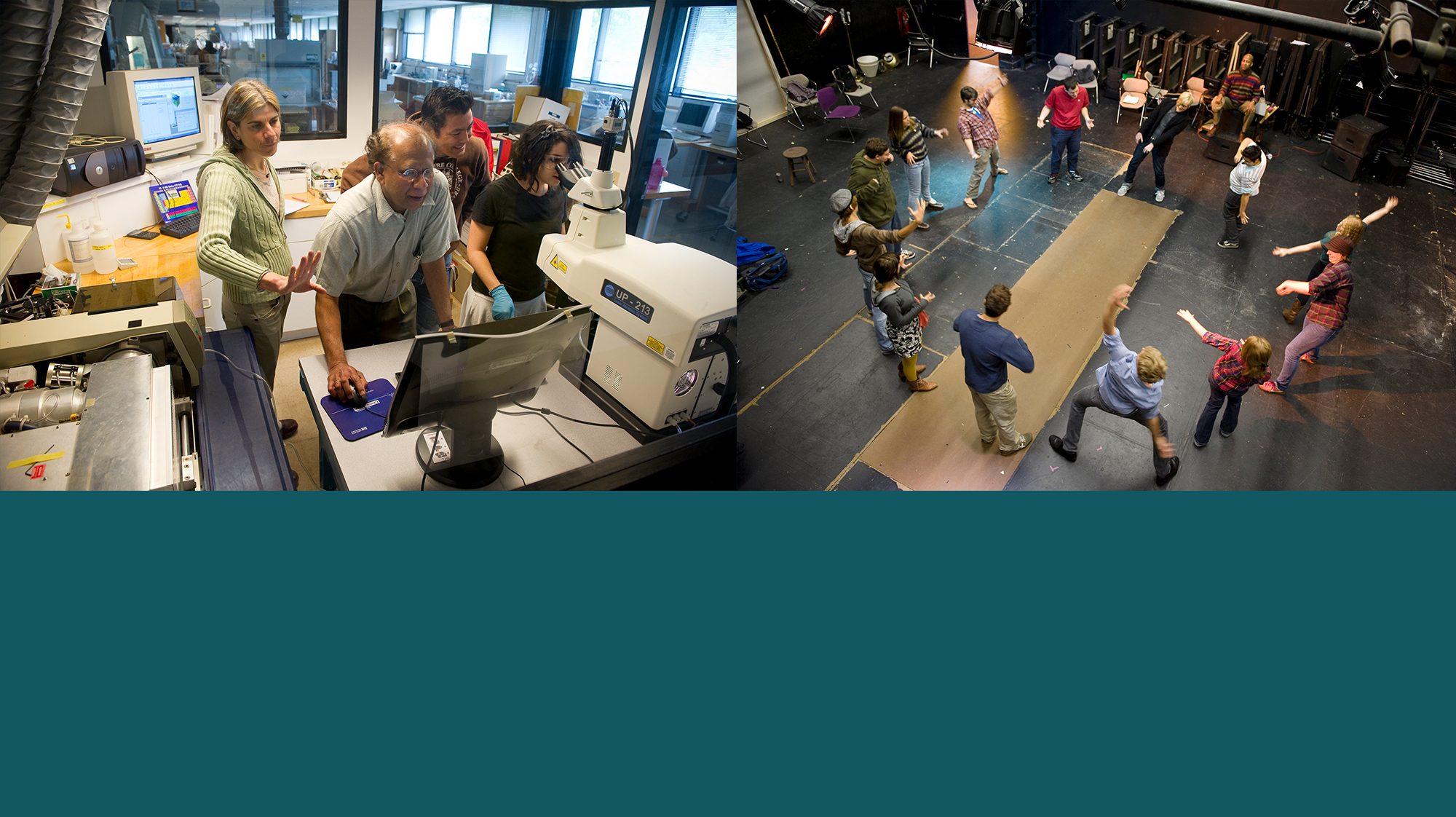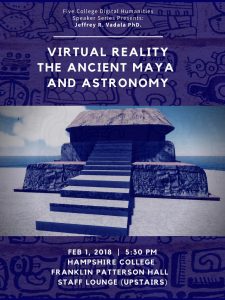A brief video from the Chronicle of Higher Education for the minutes before class:
1) Chat with students
2) Post the agenda
3) Create wonder
These tips are taken from “Small Changes in Teaching” by James Lang. There are more tips and info here.


Fostering open exchange about teaching and learning among faculty and staff at Hampshire College
The CTL has created some resources to help you develop the best collaboration with your TA or TA’s. Some tips for imagining and negotiating their roles – the “Teaching Assistants” page is under “Teaching Resources.”
AND
Lunch will be provided at noon
To register for one or both workshops, email Shannon Thorin, Assistant Dean of Faculty.
The first month of class is a critical time to set the tone for the semester and foster student participation in critical discussions. In this session, we will review key inclusive practices that assist with this. Then, we will take a closer look at what it means for students to be full participants in the course, with an eye toward how we hold space for different viewpoints. In this session, we will reflect on our own syllabi and projects, with a full participation lens, and work through particular dynamics that may arise in whole class and small group discussions, from both our vantage points as faculty and from the viewpoints of students.
This workshop will be facilitated by Becky Wai-Ling Packard, professor of psychology and education at Mt. Holyoke College and author of Successful STEM Mentoring Initiatives for Underrepresented Students: A research-based guide for faculty and administrators. Packard has served as the Director of the Teaching and Learning Initiative program, Associate Dean of Faculty, and Director of the Weissman Center for Leadership at Mt. Holyoke College.
Before the fall semester begins, come explore the issues involved in negotiating and holding clear expectations and requirements around student accommodations. Be prepared with a system that meets student need without compromising your course or overly taxing your time. We’ll have a general discussion and include uncovering your concerns, articulating your standards, writing a syllabus statement, and developing strategies/using the OARS Holistic Learning Program toolbox for contingency planning with students.
The workshop will be facilitated by:
Milo Bezark, Holistic Learning Project Alumni Fellow
Aaron Ferguson, Director of Accessibility Resources and Services, Office of Accessibility Resources and Services
Kristen Luschen, Dean of Multicultural Education and Inclusion and Co-Director of the Center for Teaching and Learning.

This column from Chronicle Vitae includes some great classroom activities that help you find out what students already know and what they understand from the reading. These activities also help students make connections across readings and to be prepared for class discussions.
AAC&U President Lynn Pasquerella is host of the radio segment The Academic Minute, produced by WAMC Northeast Public Radio in partnership with AAC&U. The Academic Minute features faculty and researchers from colleges and universities around the world discussing what’s new in the academy and the ways in which academic research contributes to serving the public good. In addition to being broadcast widely on radio stations around the country, each segment is posted daily on Inside Higher Ed and across The Academic Minute’s and AAC&U’s social media portals.
The Academic Minute is seeking individual submissions for upcoming segments on any topic, and campuses are also encouraged to submit ideas for “weekly takeovers” featuring five separate research segments from a single institution. Recent weekly takeovers featured research from Whitworth University, Cornell College, Lafayette College, and Purdue University (upcoming).
Please send submissions to David Hopper at dhopper@wamc.org, and be sure to tune in daily to The Academic Minute. Thank you for considering this opportunity for public engagement.
Christopher Tinson, professor of Africana Studies and History, will be reading from his new book, Radical Intellect: Liberator Magazine and Black Activism in the 1960s, this Thursday, February 8th at 7:00PM at the Odyssey Bookshop in South Hadley. You can find more information at the attached link, and can read a description of the book below:
The rise of black radicalism in the 1960s was a result of both the successes and the failures of the civil rights movement.
Its victories were inspirational, but its failures to bring about structural political and economic change pushed many to look elsewhere for new strategies. During this era of intellectual ferment, the writers, editors, and activists behind the monthly magazine Liberator (1960–71) were essential contributors to the debate. In the first full-length history of the organization that produced the magazine, Christopher M. Tinson locates the Liberator as a touchstone of U.S.-based black radical thought and organizing in the 1960s. Combining radical journalism with on-the-ground activism, the magazine was dedicated to the dissemination of a range of cultural criticism aimed at spurring political activism and became the publishing home to many notable radical intellectual-activists of the period.
By mapping the history and intellectual trajectory of the Liberator and its thinkers, Tinson traces black intellectual history beyond Black Power and Black Nationalism into an internationalism that would shape radical thought for decades to come.
 The Five College Digital Humanities Program is pleased to announce that Dr. Jeffrey R Vadala, one of our Postdoctoral Fellows in Blended Learning and Digital Humanities, will be continuing our Five College Digital Humanities speaker series.
The Five College Digital Humanities Program is pleased to announce that Dr. Jeffrey R Vadala, one of our Postdoctoral Fellows in Blended Learning and Digital Humanities, will be continuing our Five College Digital Humanities speaker series.
Dr. Jeffrey R. Vadala’s talk, “Virtual Reality, the Ancient Maya, and Astronomy” will be given on February 1, 5:30 PM at Hampshire College in Franklin Patterson Hall in the Staff Lounge (upstairs). This event is open to the public.
Among New and Old World ancient societies, the ancient Maya are known to have one of the most complex and precise systems of understanding, tracking, and observing the flow of time. Using maps and mathematical calculations, archaeologists, art historians, and epigraphers have found that these temporal systems were developed through the use of architectural calendars. Over time, these constructions developed into monumental observatories that were used to track celestial phenomena and host political ritual events.
Primarily focused on functional elements of architecture, previous studies produced highly generalized interpretations without considering how ancient Maya people experienced and interacted with both the natural and built landscape’s that contextualized the locations of these observatories. Focusing on the human experience of both the built and natural landscape, this study uses computer modeled virtual reality (VR) 3D interactive simulations to explore how the Maya interacted with their local environment and produced local astronomical knowledge at the Preclassic site of Cerro Maya (formerly known as Cerros). Researchers used fully interactive virtual reality simulations of Cerro Maya to identify two previously unknown early Maya architectural solar alignments. Additionally, by considering how these architectural alignments were transformed as Cerro Maya grew from a small seaside village into a monumental trading center, VR simulations made it possible to explore how local history and astronomical knowledge were produced and experienced differently by the various competing social orders at the time. As astronomical knowledge developed alongside society at Cerro Maya, it would come to play an important role in the development of hierarchy and social organization. Beyond archaeology, this research demonstrates that virtual reality simulations can be a powerful analytical tool for digital humanities scholars that study or explore human landscapes both built and natural.
Contact Jeffrey Vadala at jvadala@hampshire.edu or learn more at www.jeffreyvadala.com
|
|
 The Five College Digital Humanities Program is pleased to announce that Dr. Heather Richards-Rissetto from the University of Nebraska-Lincoln will be the first speaker to kick-off our Five College Digital Humanities speaker series.
The Five College Digital Humanities Program is pleased to announce that Dr. Heather Richards-Rissetto from the University of Nebraska-Lincoln will be the first speaker to kick-off our Five College Digital Humanities speaker series.
Dr. Richards-Rissetto’s talk, “Are We in the Present, Past, or Future? 3D GIS Explorations of Vision, Sound, and Movement in Ancient Maya Cities,” will be given on December 12th 5:00 pm in N255 at the Integrative Learning Center at UMass in Amherst MA.
Ancient Maya architecture worked in concert with the natural landscape to convey messages of political power, social differences, and cosmological beliefs. Temples, ball courts, palaces, and plazas offered sights and sounds to create synesthetic experiences that influenced daily life and shaped society. Geographic Information Systems (GIS) offer tools and methods to derive quantified and geovisualized data. Digital technologies such as photogrammetry, laser scanning and airborne LiDAR allow us to create 3D models of extant architecture within contemporary landscapes. But how do we simulate ancient cities rather than simply visualize present archaeological landscapes? 3D Modeling software affords us possibilities to reconstruct non-extant architecture but typically requires time-consuming manual modeling. An alternative—procedural modeling—applies “standardized” rules to rapidly generate 3D architectural models allowing simulations of ancient cities based on GIS data. Recent advances in immersive Virtual Reality (VR) allow us to bring these GIS and 3D data into VR environments for cross-disciplinary humanistic and scientific analysis. In this talk, I discuss how the MayaCityBuilder Project is using GIS and 3D data to explore sight, sound, and movement in eighth century Copan—today a UNESCO World Heritage Site in Honduras.
Find out more about Dr. Heather Richards-Rissetto’s work at https://www.unl.edu/anthropology/heather-richards-rissetto
As the end of semester is rapidly approaching there are some things you can do to help it go smoothly. You can consider the ideas listed below. Add your own practices in comments section.
Most of us have explicit expectations for students that they participate in class discussion and we include statements about their participation in their evaluations. We know that despite our clarity and our imploring, some students participate in discussion and others are reticent. Many students receive the same feedback course after course and semester after semester, suggesting that they participate more actively. It seems clear that hoping they participate does not translate into participation. Is there anything we could be doing differently to increase the number of students who participate, the depth of their engagement, or the quality of their contributions?
Likely, a student’s degree of participation is rooted in a number of issues. Students often see a professor as the expert whose job it is to impart information; they might not realize that learning requires their participation or that participation is part of their commitment to the whole class. Alternatively, a student’s lack of participation might be related to low motivation, to shyness, to worry about how they will be interpreted by peers, or to incomplete preparation for class (which in itself is affected by many issues – time management, reading ability, etc.). We won’t know which of these is at issue for any one student without conversation.
Short of meeting with each student individually, as faculty we can consider ways to change the structure of our assignments and classroom practices in order to increase student understanding of the role of participation in their learning, to increase their motivation to participate, and to improve the quality of their contributions. Here are some ideas about how to do this:
Engaged students are agents in their own education. The responsibility for engagement is not just on the students; we can prepare daily activities to support engagement by providing a number ways students can engage and upping the ante.
Further Reading:
Kelly A. Rocca (2010). Student Participation in the College Classroom: An Extended Multidisciplinary Literature Review. Communication Education. 59(2) 185-213.
Dallimore, Hertenstein, and Platt (2004). Classroom participation and discussion effectiveness: student-generated strategies. Communication Education, 53(1) 103-115